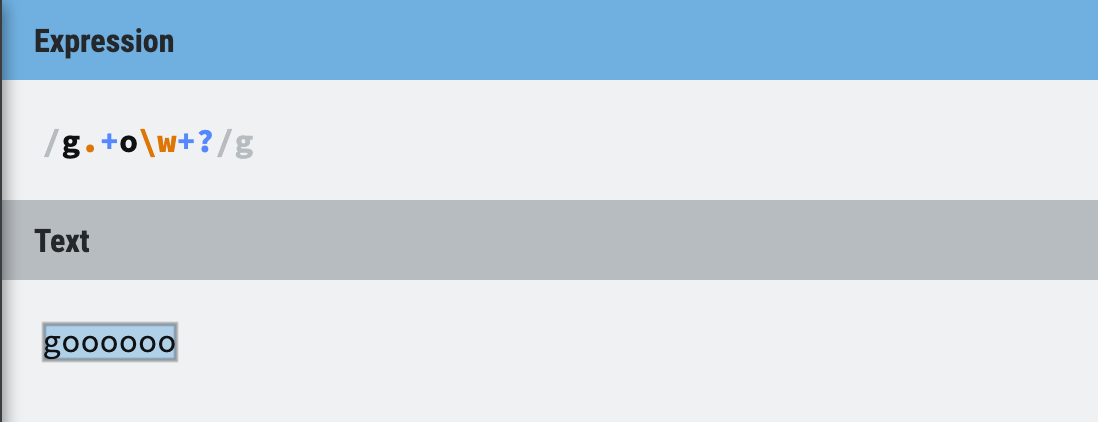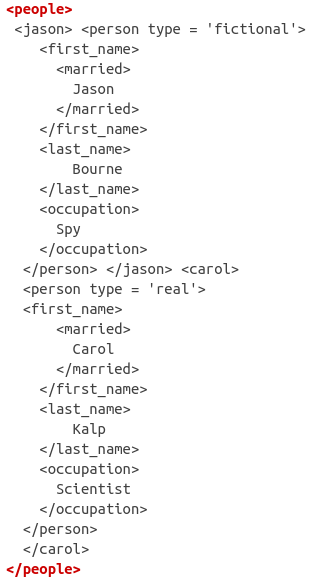

xyz+ - Matches strings which have xy followed by at least one z.xyz* - Matches strings which have xy in them, but not necessarily z.If you were to type 'Here' instead of 'here', it would only find use of 'Here' that is capitalized. here – Matches any string with 'here' in the string.^Here finish$ - Matches any string that begins with 'Here' and ends with 'finish'.finish$ - Matches any string that ends with 'finish'.^Here – Matches any string that begins with 'Here'.Here's a very simple cheat sheet for regex: Now let's get into the regular expression cheat sheet! There's a really sharp live preview for regex matching, too. It has regex highlighting to show your matches, a minimalist interface, and handy reference chart at your fingertips.
#Regex tutorial code#
It's meant to be used in your code as an expression, not as a coding language.Ī great tool for getting started with regex is Expressions, a Mac app that gives you a standalone sandboxed environment to work with regex expressions. If you have to deal with a massive amount of text, this is a life-saver. You could also use 's.t' in the parser, which will find all words that begin with 's' and end with 't'. You could simply type 'set' into a Regex parser, and it would find the word "set" in the first sentence.
#Regex tutorial verification#
When there's a regex match, it's verification your expression is correct. It uses anchors, quantifiers, operators, classes, and flags to help you parse what's in the text you're asking it to search.Ī regex expression is really trying to find what you've asked it to search for. If you've used HTML before, it's probably fair to say a regex expression is a lot like markup. It's useful for many of the most popular programming languages today, like Java, JavaScript, C-based languages, Perl, Python, Delphi, Ruby, R, and many more. Instead, it's a method to get data from massive bodies of text.
#Regex tutorial full#
The purpose of regex is not to code full programs. Splits an input string into an array of substrings at the positions defined by a regular expression pattern specified in the Regex constructor.įor the complete list of methods and properties, please read the Microsoft documentation on C#.We'll provide you with a beginner's regex tutorial, a handy regex cheat sheet, and tell you about some apps to help you along the way. In a specified input string, replaces all strings that match a regular expression pattern with a specified replacement string. Public string Replace(string input, string replacement) Searches the specified input string for all occurrences of a regular expression. Public MatchCollection Matches(string input) Indicates whether the specified regular expression finds a match in the specified input string. Public static bool IsMatch(string input, string pattern)

Indicates whether the regular expression specified in the Regex constructor finds a match in the specified input string, beginning at the specified starting position in the string. Public bool IsMatch(string input, int startat) Indicates whether the regular expression specified in the Regex constructor finds a match in a specified input string. It has the following commonly used methods − Sr.No. The Regex class is used for representing a regular expression. Click the following links to find these constructs. There are various categories of characters, operators, and constructs that lets you to define regular expressions. Constructs for Defining Regular Expressions A pattern consists of one or more character literals, operators, or constructs. Net framework provides a regular expression engine that allows such matching. A regular expression is a pattern that could be matched against an input text.


 0 kommentar(er)
0 kommentar(er)
